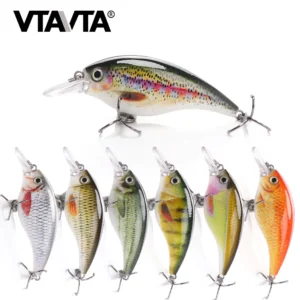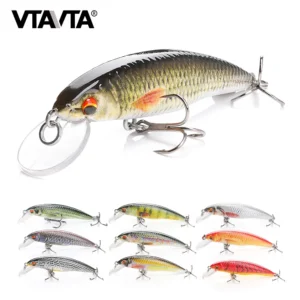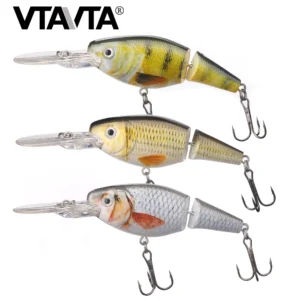Fishing for Mindfulness: 5 Techniques to Reduce Anxiety Through Aquatic Activities
In a world that constantly demands our attention, the search for ways to calm our minds and relieve anxiety has become more crucial than ever. While mindfulness practices like meditation, yoga, and journaling are popular choices, there’s another, often overlooked, path to mental clarity: fishing.
Fishing, especially when practiced mindfully, can be a powerful tool to reduce stress and anxiety. The serene environment of water, the rhythm of casting, and the focus on the present moment all combine to create a natural form of meditation. In this article, we’ll explore five mindful fishing techniques that can help you reduce anxiety and bring peace to your life.
Why Fishing is an Effective Mindfulness Practice
Before diving into the techniques, let’s take a moment to understand why fishing is so effective for mindfulness. At its core, mindfulness is about being present in the moment, without judgment. Fishing naturally encourages this state of mind, as it requires patience, focus, and an awareness of your surroundings.
When you’re fishing, you’re immersed in nature. The sounds of the water, the rustling of leaves, and the birds in the distance help you tune out the noise of the world. The act of casting a line or waiting for a bite can create a calming, rhythmic sensation that draws you into the present moment. In this way, fishing offers the perfect environment for mindfulness and anxiety relief.
Let’s look at five specific techniques that can help you harness the power of fishing for reducing anxiety.
1. The Power of Breathing: Deep Breaths on the Water
One of the simplest yet most effective ways to calm your mind while fishing is by focusing on your breath. When you cast your line or sit in your boat, take a few moments to consciously breathe deeply. Slow, deliberate inhales and exhales help activate your parasympathetic nervous system, the part of your body responsible for relaxation.
How to Practice:
Inhale deeply through your nose for a count of four.
Hold your breath for a count of two.
Exhale slowly through your mouth for a count of six.
Repeat this cycle for several minutes, focusing solely on the rhythm of your breath.
As you continue to breathe deeply, you’ll notice your anxiety melting away. The more you practice this technique, the easier it becomes to enter a calm, relaxed state—even in the midst of stress.
2. The Art of Focus: Connecting with Your Surroundings
Fishing requires a unique kind of focus. You need to pay attention to the subtle movements of your line, the changes in the water, and the potential signs of a fish biting. This intense focus can help you shift your attention away from anxious thoughts and fully immerse yourself in the task at hand.
How to Practice:
Observe your environment: Look around and take in the details of the water, the sky, and the natural surroundings. Notice the colors, textures, and movements around you.
Engage your senses: Listen to the sounds of the water, the birds, and the wind. Feel the texture of the fishing rod in your hands and the air on your skin.
Be present: As you focus on these details, your mind will naturally begin to let go of worries and distractions. Instead of thinking about the past or future, you’ll be fully absorbed in the present moment.
This practice of sensory awareness helps cultivate a mindful state that allows anxiety to dissipate. By being present in nature, you’ll find that the worries of everyday life seem less significant.
3. The Power of Patience: Embracing the Wait
Fishing teaches you the value of patience. When you cast your line, you don’t know how long it will take for a fish to bite. The waiting process can feel frustrating at times, but it also provides an opportunity to practice patience and trust.
Rather than rushing to catch a fish or forcing a result, fishing encourages you to embrace the unknown. This patience can be translated into life: learning to accept uncertainty and letting go of the need to control every outcome.
How to Practice:
Embrace the stillness: While you wait for a bite, resist the urge to check your phone or distract yourself with other thoughts. Instead, use this time to relax and observe your surroundings.
Cultivate patience: If you don’t catch anything right away, remind yourself that fishing is as much about the experience as it is about the outcome. Trust that the fish will come when the time is right.
Let go of expectations: Practice releasing any attachment to catching a fish. By doing so, you’ll free yourself from the pressure and enjoy the process.
Patience is a powerful tool for reducing anxiety because it teaches you to be comfortable with uncertainty. The more you practice, the more you’ll find that life’s challenges are easier to navigate when you’re not constantly seeking immediate results.
4. The Rhythm of Casting: Meditation in Motion
Casting your line can be a meditative practice. The repetitive motion of swinging the rod and releasing the line can create a calming rhythm that helps you enter a state of flow. As you continue this motion, you may notice your thoughts becoming quieter, and your body entering a more relaxed state.
How to Practice:
Find your rhythm: Focus on the motion of casting the line. Notice how the rod moves in your hands, the arc of the line, and the sound as it hits the water.
Sync your breath: As you cast, synchronize your deep breaths with the motion. For example, inhale as you prepare to cast, and exhale as you release the line.
Let go of distractions: Allow the motion of casting to become your primary focus. If your mind starts to wander, gently guide it back to the rhythm of the cast and the sound of the water.
The act of casting becomes a form of moving meditation, allowing you to calm your mind and ease anxiety. This rhythmic practice can help you stay present and grounded, reducing the mental chatter that often leads to stress.
5. Reflecting on the Experience: Gratitude for the Moment
Finally, once your fishing session is over, take a moment to reflect on the experience. Gratitude is a powerful practice that can help shift your perspective from anxiety to appreciation. Whether or not you caught anything, the time spent outdoors, the beauty of nature, and the opportunity for mindfulness are all worth acknowledging.
How to Practice:
Take a moment to reflect: Before leaving the fishing spot, sit quietly and reflect on the experience. What did you notice about the environment? How did your body feel? What moments brought you peace?
Express gratitude: Mentally list three things you’re grateful for during your fishing session. It could be the calmness of the water, the quiet of the surroundings, or the sense of accomplishment you felt.
Carry the calm with you: As you leave the fishing spot, try to carry that sense of calm and mindfulness with you throughout the day. Notice how your anxiety feels lighter and more manageable.
Gratitude practice helps reinforce the positive impact of fishing on your mental health. By regularly reflecting on your experiences, you train your brain to focus on the present and appreciate the little moments.
Making Fishing a Mindful Practice
Fishing is more than just a hobby or a way to catch dinner—it’s a path to mindfulness and mental well-being. By incorporating these five techniques—breathing, focus, patience, rhythm, and gratitude—you can transform your fishing sessions into powerful tools for reducing anxiety and finding peace.
The next time you’re feeling overwhelmed, consider grabbing your fishing rod and heading to the water. With each cast, you’ll be one step closer to a calmer mind and a more peaceful life. Whether you’re a seasoned angler or a beginner, fishing offers a unique opportunity to connect with nature, practice mindfulness, and reduce anxiety in a way that feels natural and enjoyable.
So, the next time stress starts to take over, remember: sometimes the best way to find clarity is by simply casting your line into the water and waiting for the world to slow down.




